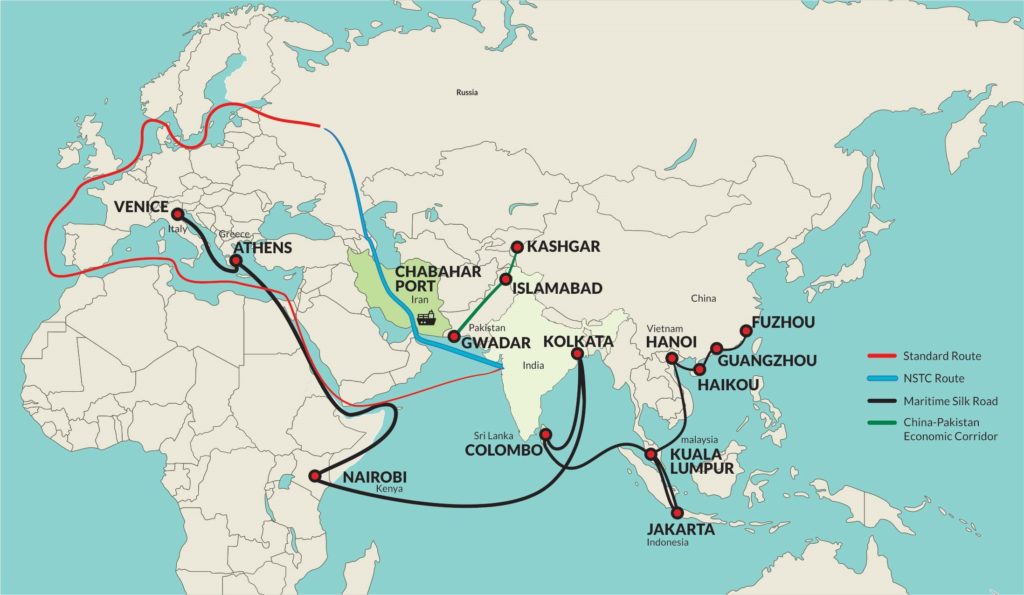Why in news?
External Affairs Minister S. Jaishankar said on 2nd March 2020 that India was “watching the space” closely to ensure that gains of the past two decades were not lost after U.S. signed a deal with Taliban.
India’s Concerns Not Addressed
- While India has raised concerns over the future of democracy, human rights, women’s rights and other achievements made in Afghanistan since 2001, when the Taliban regime was last defeated, the issues were not addressed in the agreement between the U.S. and Taliban signed on February 29. The agreement provides a timetable for withdrawal of the U.S. troops from Afghanistan by May 2021 and an intra-Afghan dialogue in March 2020.
Significance Afghanistan with respect to India
- Afghanistan is a strategic investment for India, and India has made significant contributions to the rebuilding of the country.
- Indian is engaged with
Afghanistan by following ways:
- Developing social infrastructure as hospitals, schools;
- Public infrastructure such as Salma dam, and parliament building ;
- Humanitarian assistance such as medical missions;
- Training of military officer and soldiers;
- Military warfare such as military helicopters and repairing the old soviet era helicopters.
- Afghanistan is a gateway for The International North–South Transport Corridor (INSTC) for India.
- India’s development of the Chabahar Port is of great strategic importance for the development of regional maritime transit traffic to Afghanistan and Central Asia
- Afghanistan is also involved in The Turkmenistan–Afghanistan–Pakistan–India Pipeline (TAPI) Project.
- Afghanistan can help India to overcome/oppose China’s The Belt and Road Initiative (BRI, or B&R), formerly known as One Belt One Road (OBOR) initiative.
- Afghanistan can help fulfil India’s Oil demands.
INSTC
The International North–South Transport Corridor (INSTC) is a multi-modal connectivity project to establish transport networks (ship, rail, and road route) for moving freight between India, Russia, Iran, Europe and Central Asia.

- It links Indian Ocean and Persian Gulf to the Caspian Sea via Iran, and then onwards to northern Europe via St. Petersburg in Russia.
- The route primarily involves moving freight from India, Iran, Azerbaijan and Russia via ship, rail and road.
- The objective of the corridor is to increase trade connectivity between major cities such as Mumbai, Moscow, Tehran, Baku, Bandar Abbas, Astrakhan, Bandar Anzali and etc.
- The current members are India, Iran, Russia, Azerbaijan, Kazakhstan, Armenia, Belarus, Tajikistan, Kyrgyzstan, Oman, Syria, Turkey, Ukraine, and Bulgaria (observer).
- Turkmenistan currently is not a formal member but is likely to have road connectivity to the corridor, after being formally invited by Prime Minister Narendra Modi.
Chabahar Port
- This port is Located on the Gulf of Oman and is the only oceanic port of the country.

- With this, India can bypass Pakistan in transporting goods to Afghanistan.
- It will also boost India’s access to Iran, the key gateway to the International North-South Transport Corridor that has sea, rail and road routes between India, Russia, Iran, Europe and Central Asia.
- It also helps India counter Chinese presence in the Arabian Seawhich China is trying to ensure by helping Pakistan develop the Gwadar port. Gwadar port is less than 400 km from Chabahar by road and 100 km by sea.
- With Chabahar port being developed and operated by India, Iran also becomes a military ally to India. Chabahar could be used in case China decides to flex its navy muscles by stationing ships in Gwadar port to reckon its upper hand in the Indian Ocean, Persian Gulf and Middle East.
- Trade benefits: With Chabahar port becoming functional, there will be a significant boost in the import of iron ore, sugar and rice to India. The import cost of oil to India will also see a considerable decline. India has already increased its crude purchase from Iran since the West imposed ban on Iran was lifted.
- From a diplomatic perspective, Chabahar port could be used as a point from where humanitarian operations could be coordinated.
TAPI
- The Turkmenistan–Afghanistan–Pakistan–India Pipeline (TAPI), also known as Trans-Afghanistan Pipeline, is a natural gas pipeline being developed by the Galkynysh – TAPI Pipeline Company Limited.

- The pipeline will transport natural gas from the Galkynysh Gas Field in Turkmenistan through Afghanistan into Pakistan and then to India.
- The pipeline will begin pumping natural gas by the beginning of 2020 and supply life is expected to last for 30 years.
- The TAPI Project is considered as an important initiative of these four countries to connect energy rich Central Asia with energy starved South Asia.
- It will provide an alternative supply source of gas with dependable reserves leading to enhanced energy security.
- It will further diversify the fuel basket to the benefit of Indian economy as it would be used mainly in power, fertilizer and city gas sectors.





